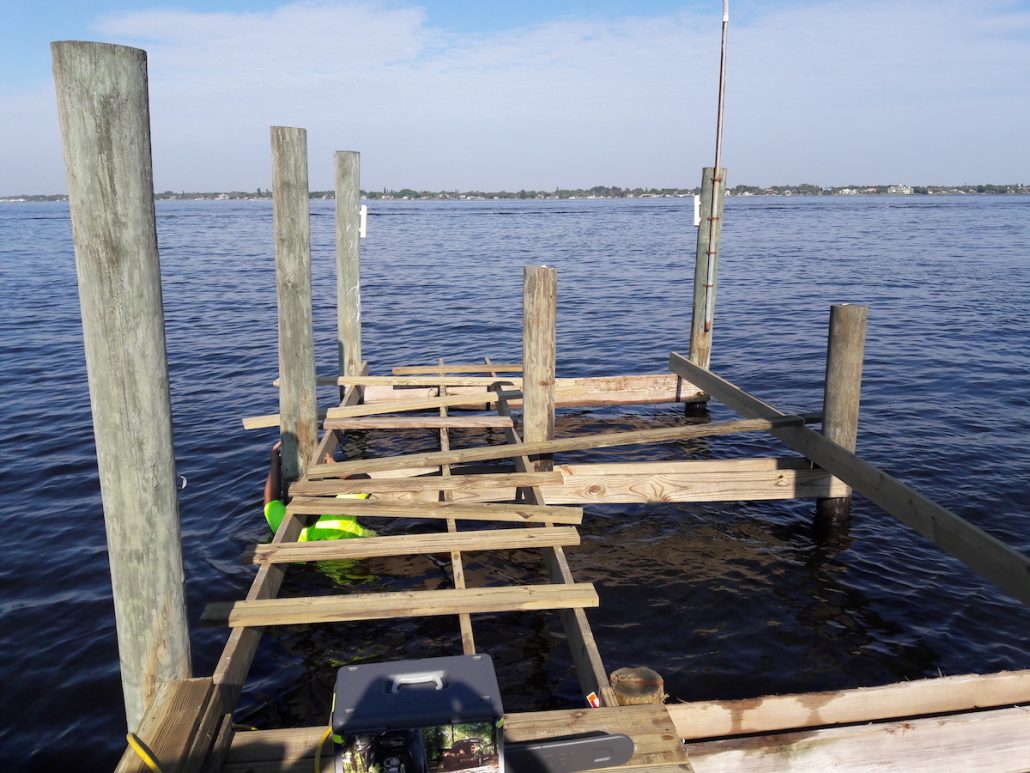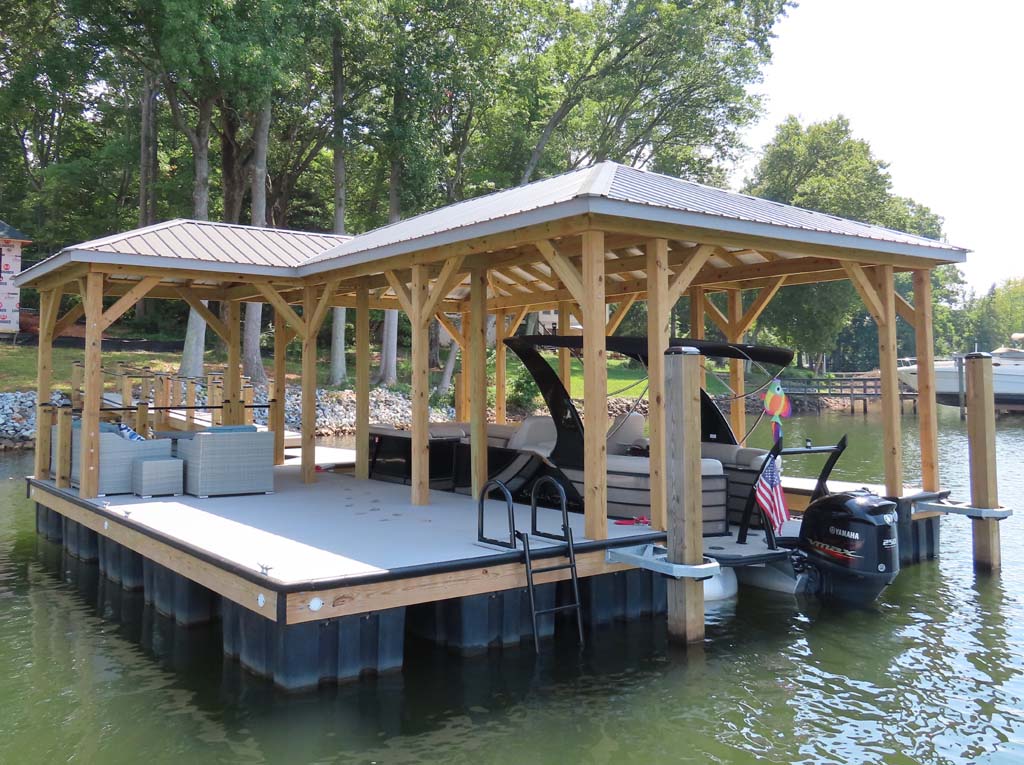Crucial Guide to Inexpensive Dock Repairs for Homeowners
Crucial Guide to Inexpensive Dock Repairs for Homeowners
Blog Article
Effective Dock Repair Techniques: Ensuring Structural Integrity
Guaranteeing the architectural integrity of docks via effective repair service strategies is critical for the durability and safety of marine centers. Subsequently, choosing the appropriate repair materials, such as corrosion-resistant alloys and composite products, is vital for resilience.
Examining Dock Damages
Evaluating dock damage is a vital very first step in guaranteeing the structural stability and security of any type of docking facility. Key aspects to examine consist of the dock's foundation, pilings, decking, and hardware (Dock Repairs).
Structural designers or certified examiners usually do these evaluations using specialized methods and tools. Undersea evaluations may employ finder devices or remotely ran automobiles (ROVs) to discover submerged damages. Over water, visual inspections are complemented by utilizing dampness meters and various other diagnostic devices to reveal underlying problems not quickly visible to the nude eye.

Finding Repair Materials
Selecting the suitable repair materials is a critical step in the dock repair procedure, one that straight influences the durability and performance of the repaired structure. Material choice need to be driven by aspects such as ecological conditions, load-bearing demands, and compatibility with existing dock elements. For example, wood is a standard selection for anchors as a result of its all-natural durability and aesthetic appeal. Nonetheless, picking the ideal type of wood, such as pressure-treated lumber or normally rot-resistant varieties like cedar or teak, is important to withstand marine settings.
Along with wood, composite products are progressively preferred because of their sturdiness and reduced maintenance needs. Composites, commonly made from a blend of plastic and timber fibers, use outstanding resistance to rot, pests, and UV damage. For steel docks, selecting corrosion-resistant alloys such as galvanized steel or marine-grade aluminum is vital to avoid corrosion and make certain structural integrity in saline water problems.
Epoxy resins and marine-grade sealants are crucial for repairing fractures and securing joints, offering a water-proof obstacle and boosting the dock's overall toughness. By thoroughly picking top notch products, dock repair work can achieve resilient results, thus securing versus future destruction and ensuring safe, reputable usage.
Architectural Support Strategies
Reliable architectural reinforcement techniques are essential in making certain the security and durability of dock repair work. This method is particularly reliable for docks exposed to hefty loads or severe environmental conditions.
Another essential strategy is the application of fiber-reinforced polymers (FRP) These products provide high strength-to-weight proportions and exceptional resistance to corrosion, making them perfect for reinforcing wood or concrete anchors. FRP can be applied in strips or sheets and adhered with epoxy resins to enhance architectural integrity.
Supporting and securing systems also play a crucial duty in structural support. Cross-bracing, utilizing steel or wooden light beams, can combat side forces, lowering persuading and activity. Anchoring systems, such as helical piers straight from the source or driven heaps, offer a secure foundation by moving loads to much deeper, more steady soil layers.
Finally, the integration of load-distribution plates can assist disperse weight much more equally across the dock's surface area, mitigating localized stress points. These methods jointly ensure that anchors continue to be robust and risk-free, efficient in holding up against the rigors of their functional atmosphere.
Advanced Repair Methods

One more sophisticated technique involves underwater welding, which permits repairs to be conducted without the need to dewater the location. This approach is specifically helpful for attending to structural problems in submerged dock elements, making sure very little interruption to operations. Boosted welding strategies, combined with robotic systems, deliver accuracy and dependability, thus extending the lifespan of the dock.
Furthermore, cathodic security systems are implemented to stop deterioration in metal dock structures. By utilizing sacrificial anodes or pleased present systems, these techniques properly alleviate the electrochemical processes that see this bring about material deterioration.
Last but not least, advanced monitoring modern technologies, such as structural wellness tracking (SHM) systems, provide real-time information on the condition of dock frameworks. These systems allow proactive maintenance and prompt interventions, ultimately making sure the long-term architectural integrity of the dock.
Upkeep and Prevention
Maintenance and avoidance are essential principles that underpin the durability and safety and security of dock structures. Normal inspections are extremely important, permitting very early detection of deterioration, possible weaknesses, and ecological influences. A positive strategy, involving routine look for corrosion, rot, and structural changes, mitigates expensive fixings and prolongs the dock's functional life.
Safety nets need to include using safety coverings to steel parts to defend against corrosion and making use of treated wood to withstand degeneration. In addition, making sure proper drain and air flow can protect against water accumulation, which is a common root cause of structural deterioration. Including top quality products and sticking to manufacturer guidelines throughout building and construction and fixing stages also play important functions in improving durability.

Training employees in dock upkeep finest practices ensures regular application of preventative procedures. Leveraging technological breakthroughs, such as drones for examinations and sensors for real-time monitoring, can further boost maintenance initiatives. By focusing on maintenance and avoidance, dock owners can ensure architectural stability, operational safety and security, and see this cost-effective monitoring over the dock's life expectancy.
Conclusion
To conclude, preserving the architectural stability of aquatic facilities demands detailed dock repair methods. Comprehensive examinations using innovative devices uncover both noticeable and concealed damages, while the option of suitable fixing materials improves resilience. Applying structural reinforcement approaches addresses tension factors effectively. Advanced repair work strategies, coupled with routine upkeep techniques, guarantee the dock stays secure and operational under diverse environmental problems. Taking on these techniques substantially lengthens the lifespan and functionality of marine framework.
Guaranteeing the structural stability of docks with efficient fixing methods is paramount for the durability and safety and security of marine centers.Choosing the ideal repair materials is a pivotal step in the dock repair procedure, one that straight affects the long life and performance of the repaired structure.Effective structural support techniques are crucial in ensuring the stability and long life of dock repair services. By focusing on maintenance and avoidance, dock owners can make sure structural integrity, operational safety and security, and cost-efficient monitoring over the dock's life expectancy.
In final thought, maintaining the structural honesty of aquatic facilities demands thorough dock repair service techniques.
Report this page